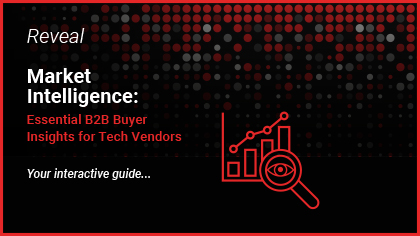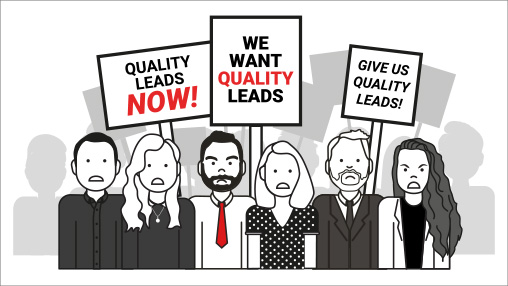Effective lead generation comes down to both B2B lead quality and quantity. But with mounting pressure to demonstrate impact through hitting MQL targets, it’s easy for B2B marketers to overlook quality and become fixated on the latter.
While our previous article explores the importance of working out your optimum MQL lead volume to guarantee you hit revenue targets, this article dives into importance of defining B2B lead quality. Including:
- 5 benefits of B2B lead quality
- Intent checklist to determine baseline quality
- Techniques for nurturing quality leads into valuable customers
Read on to learn how to speed-up your B2B Sales Cycle and reduce lead rejections through delivering a high standard of lead quality your Sales team will love.
Reading time: 4 minutes
Why is Lead Quality the key area of focus for Demand Generation?
According to our first party research conducted among our IFP audience, lead quality is the key focus for 40% of senior B2B marketers. This suggests marketers are increasingly aware of the importance of generating quality leads to achieve sustainable business growth.
For example, leads matching your Ideal Customer Profile (ICP) demonstrating a high propensity to purchase will not only accelerate your sales cycle and win more revenue. Closing new businesses with a high compatibility with your internal capabilities will ultimately help you to grow a loyal customer base with greater profitability opportunities.
Here are 5 key benefits of lead quality:
- Avoids wasted time and resource – while lead quantity is important to sustaining sales momentum, if you’re not attracting the right leads for your business you’ll be detracting sales and marketing efforts away from your growth targets
- Boosts conversion rates – ensuring only high quality leads qualify by selecting those who meet specific criteria will help produce higher conversion rates and ultimately greater ROI
- Delivers a more predictable pipeline – through removing leads unlikely to convert and accelerating the pipeline with targeted leads that are in-market
- Motivates sales teams – by suppling quality leads with the right buyer power and active interest in your company, reduces the number of lead objections
- Improves reporting efficiency – if you push customers into your sales funnel too early, this will have an impact on your ability to effectively identify whether the channels you have been using to acquire those leads are successful
How does Lead Quality differ according to perspective?
While bad leads are undoubtedly a waste of valuable time, effort and resource –it’s important to note lead quality has an element of subjectivity. Countless types of leads exist and what’s considered a quality lead for one business might not be for another. Lead quality can also be perceived differently between go-to-market teams and further still, against different marketing campaign objectives.
For example, a standard lead fitting ICP criteria where key business card details are given in exchange for a whitepaper, could be seen by marketers as a quality top of the funnel lead. However, as it doesn’t hold as much value as a BANT (Budget, Authority, Need, Timing) qualified lead, it’s highly likely to be rejected by a sales team.
But that’s not to say it should be disregarded. An early engager that matches your target ICP could go on to be a high value customer, given the right nurture program and lead follow-up strategy.
How to define B2B Lead Quality (and its varying degrees)
The following diagram demonstrates how to develop a holistic view of your ICP with some of the key data points that can be leveraged to ensure campaigns deliver quality B2B marketing leads.
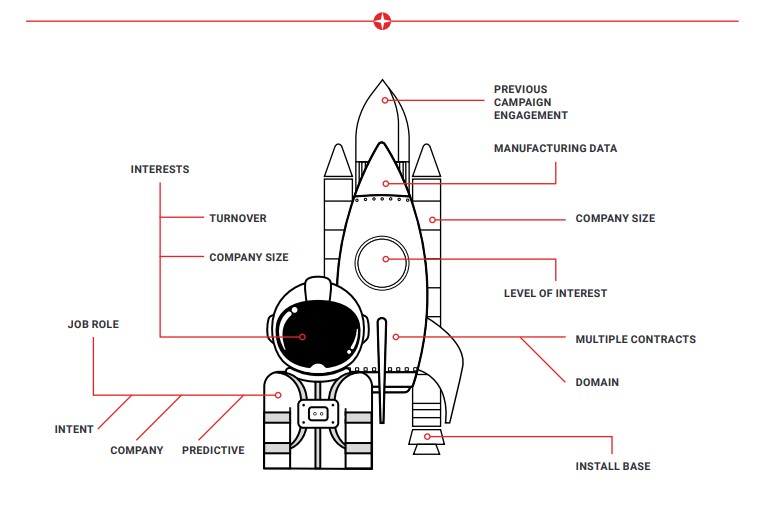
Using a broad range of first party firmographic data points can help you to develop a profile of key characteristics that denote a baseline of lead quality. Such as:
- Target Industry
- Company size
- Turnover
- Job title
However, while the above characteristics help show the lead is the ‘right fit’, there’s not enough evidence to suggest the lead is likely to convert into a customer. And as such, increases the chances of the lead being rejected by sales.
This is when the overlay of third party buyer signals can massively extend a marketers ability to access lead quality in sales accepted terms such as ‘likelihood to convert’ – with greater accuracy.
This involves aggregating data points from both first and third party sources to build richer lead profiles such as purchase authority (or buyer power), active topic searches and overall account activity (such as account surge). These three insights alone can be used in generating predictive lead scoring, a numerical value which takes into consideration influence, engagement and buyer stage to signal the likelihood of a lead converting.
Ensuring a lead’s quality is assessed and scored correctly before being passed to sales is crucial to maintaining a high MQL to SQL conversion rate and reducing lead rejections to keep driving B2B Sales Acceleration.
6 ways B2B Lead Generation partners can generate quality marketing leads at scale
Thought leadership delivered through reliable content syndication partners can be a cost effective method of generating high quality leads at scale, earlier on their buyer journey. This enables marketers to keep a constant stream of MQLs flowing into the marketing funnel with more opportunities to intercept and influence them at key touchpoints in their journey.
- Matching your ICP criteria to real B2B buyers
- Leveraging intent to identify what content resonates best
- Executing multichannel tactics to amplify brand recognition
- Deploying Quality Assurance teams to verify each lead
- Lead updates delivered directly into your CRM or MAP
- Lead scoring and buyer intelligence applied on individual lead level
Having a high standard of lead quality from the beginning, ensures you get the best ROI from your lead generation programs. The next step is to nurture early engagers into high converting SQLs.
How to nurture leads effectively…
Nurture streams are essential to help push your top of funnel leads through to becoming SQLs. They help B2B marketers avoid losing lead interest by keeping them moving down the funnel, all the way through the often lengthy sales process.
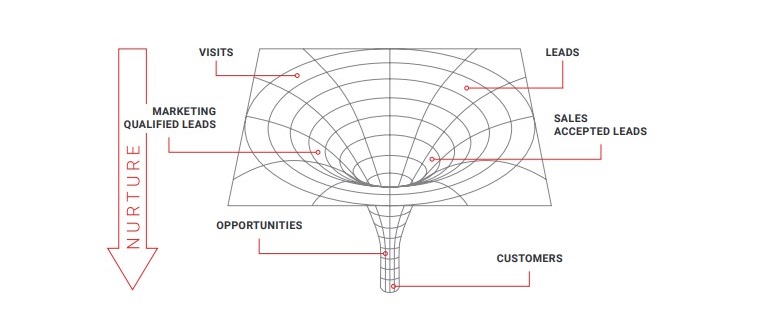
Though bear in mind, the velocity at which you move leads through the funnel to become SQLs plays the critical factor. The quicker you are able to convert Leads > MQLs > SQLs > Opportunities, the faster you will see B2B sales accelerate at great speed.
Here’s how to nurture your quality leads for maximum effectiveness:
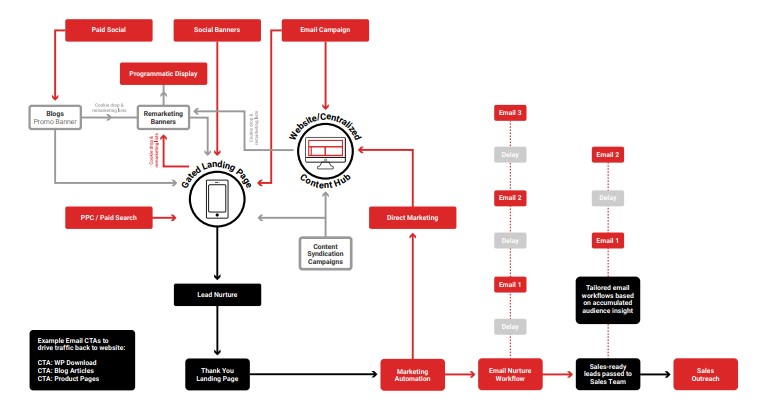
Focus on nurturing leads through a nurture stream that essentially creates a digital ecosystem for your leads to orbit, ensuring they receive your key messaging while maintaining front of mind awareness. Combining your first and third party data and utilizing a range of owned and paid channels is how you can achieve maximum lead conversion rates and increase the velocity of your B2B sales process.
To go one step further, best practice would require creating multiple nurture streams that each align to different personas, buyer stages and product interests – ensuring content and formats that resonate for each is readily available to intercept at pivotal stages to really drive B2B Sales Acceleration.
Final Thoughts
Lead generation needs to focus on quality of leads in order to achieve its greatest potential to accelerate the B2B sales pipeline. Once lead quality has been determined and specific criteria established, relationships can be fostered and sales can really accelerate.
Achieving high B2B lead quality ensures valuable time and resource is put to optimal use and spent engaging with leads who hold the greatest propensity to convert, rather than following up bad leads. Nurturing leads effectively takes this one step further, enhancing your initial efforts by providing relevant content at significant stages of the buyer journey to ensure quality leads are being looked after – again increasing the velocity of B2B Sales Acceleration.
